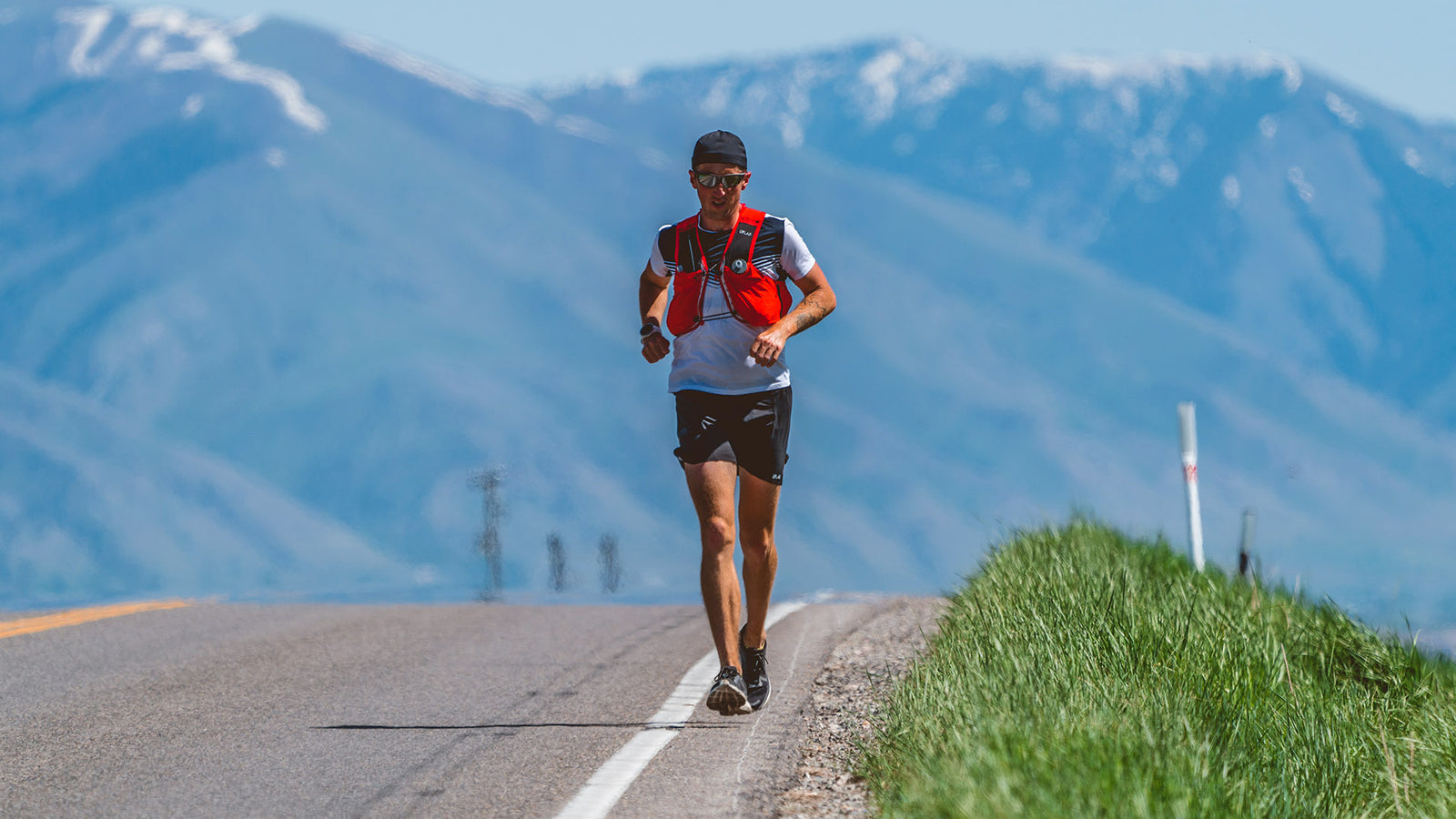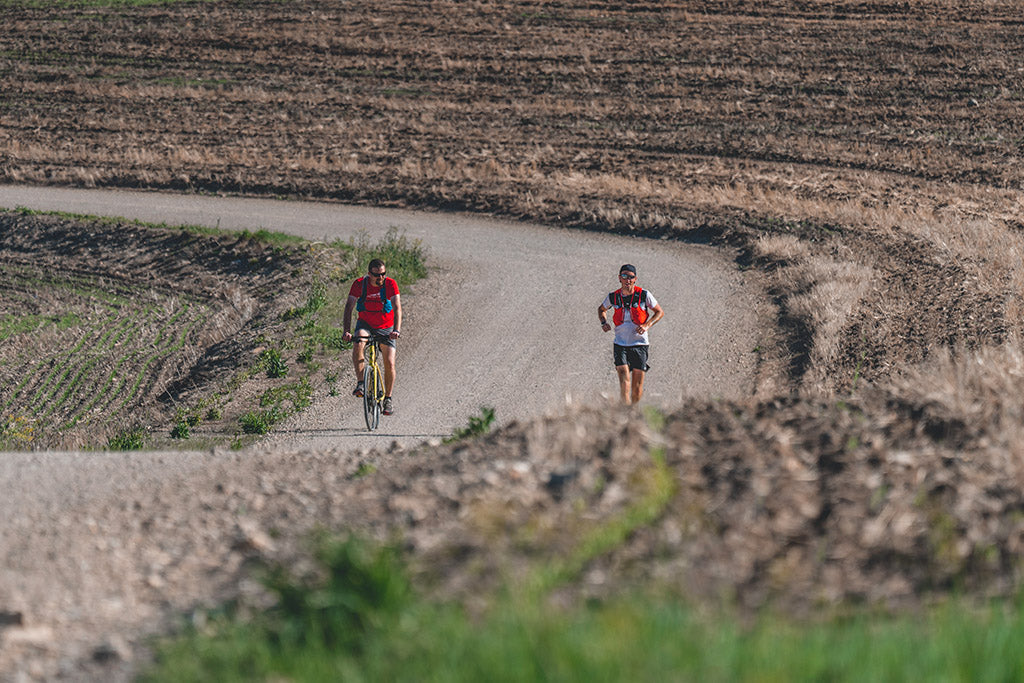The NEW BATPAKS Are Here!
The NEW BATPAKS Are Here!
Add description, images, menus and links to your mega menu
A column with no settings can be used as a spacer
Link to your collections, sales and even external links
Add up to five columns
Add description, images, menus and links to your mega menu
A column with no settings can be used as a spacer
Link to your collections, sales and even external links
Add up to five columns

Michael McKnight Runs 100-miles on Zero Calories
May 13, 2020 6 min read 3 Comments
Pushing the Limits of Human Endurance✼
On May 8, ultrarunner Michael McKnight did the unthinkable: he ran 100 miles without having consumed any calories throughout the run that took him 18 hours and 40 minutes.
But if you ask him, it wasn't unthinkable or even all that challenging. In fact, according to McKnight, it was actually quite enjoyable.
To fully understand the enjoyment, however, one must first look at the preparation that took place. And according to McKnight, it was years of physical and mental training.
The Accident That Defined Him
It was in 2012 when McKnight was in a skiing accident that left him with two rods running up his spine, nine screws in his vertebrae and a bleak prognosis regarding any physical activity, let alone running. He set out to prove people and mostly himself wrong.
He began running, and entering in 10K races, and half marathons, and quickly, by running standards, embarked on ultramarathon-distance races taking him 50-, 100- and even 200-miles at a time. He began winning and breaking records, continuing to push his physical limitations that were now diminishing as the miles ticked by.
Even with McKnight's success, there was one thing he felt was holding him back from reaching higher goals: his diet.
Enter: The Fat-Adapted Athlete
"In most of my races, I'd have digestive issues," he said. "I tried lots of supplements and other foods while eating to fix the issue, but nothing really worked. I was also carrying around a lot more weight than most runners at 190 pounds. I had heard about the keto diet and fat adapted athletes, and about three years ago, I decided to try it."

McKnight said he will fast for 18 hours a day, and allows himself to eat between the hours of 1 p.m. and 7 p.m. His diet consists mainly of meat and eggs with some fruit to replenish glycogen stores he loses while running. The concept, he said has been around for a while, but operates on the premise that humans have enough fat stores to last for days. McKnight's friend and coach, Jeff Browning who is also a fat-adapted athlete, said that the diet makes sense for many ultrarunners.
"There are many reasons why the keto diet works for ultra runners," Browning said in an email. "The biggest benefits I see as an ultra athlete and a coach is improved recovery, low inflammation, less GI stress, and becoming more 'bonk-proof.' If you can tap into a higher rate of fat per minute from on-board sources, you need to supplement less exogenous calories per hour and your chances of a big energy dip (i.e., the dreaded bonk) is less likely to happen or is literally non-existent. Also, other benefits include consistent energy throughout the day, mental clarity, and ease in maintaining healthy body weight.
McKnight began to thrive as a fat-adapted athlete, winning ultras and breaking records including three consecutive 200-mile races. As his body thrived on fasting and tapping into fat stores, he began to wonder if he could push his limits further. He began to ask the question: could he run an entire ultra without any calories?
Pushing More Limits
McKnight began to test the waters, completing longer and farther distances without calories, only drinking water and calorie-free electrolytes every couple of hours to keep his body and muscles working properly. He eventually completed a 32-mile run, proving that yes, an ultra distance on no calories was in fact possible.

Conquering that possibility only led to the drive to push his limits even more, and he made a goal of running 100 miles with no caloric intake -- a feat that his coach said he wasn't sure was possible.
"This was all Mike's idea," Browning said. "I actually tried to deter him from the attempt, but he was adamant. He wanted to see if it was possible. I had coached an athlete who attempted a few years ago (his own idea as well) and made it 75 miles in 24 hours. I knew the basic math on this — that we have more than enough on-board fat calories stored (in a thin person) to be able to cover 100 miles. A theory. However, given Mike's abilities and talent, I thought he had a good shot at it. I did not think he could go sub-20 hours though — perhaps sub-24. I was surprised how steady and strong he was in the 2nd half and what I thought was theory, turned into reality."
The 100-Mile, Calorie-Free Reality
With a full season of ultra races ahead of him, McKnight hadn't solidified a date and time when he would attempt his calorie-free run, but in mid-March, due to the social distancing restrictions of the world-wide pandemic, all of his events were suddenly cancelled. This left him with time to do what he wanted.
He decided on a date of May 8, and a starting place of his front porch. McKnight mapped out a 100-mile route that consisted of single track on the nearby Bear River Mountain range, paved country roads, and miles and miles of flat dirt roads in and near his hometown of Smithfield, Utah.
"I normally do my runs on mountain trails, but knew that in order to have the energy I needed, it needed to be a relatively flat course," McKnight said. "I put all the hills in the first third of the course because I knew my legs would be tired toward the end. I mapped the route past houses of family members and places where I knew I could get water so I wasn't carrying too much with me. I had cell phone service the whole time, and I could call my wife to bring me water if I was running low. I kept track of my heart rate, making sure it was where I needed it to be. I had pacers with me for 85 out of the 100 miles. It really went as smoothly as it possibly could have."

As for hunger, McKnight said there was only once when he felt hungry.
"There was one time when I passed a bag of half-eaten marshmallows that somebody had left on the ground," he said. "I don't even like marshmallows, but seeing them there, I started to think about how good marshmallows sounded."
Aside from mouth-watering, half-eaten marshmallows, McKnight said the challenge was less of a challenge and more of a wonderful experience that shows what the human mind and body are capable of.
The Takeaway
"Ultrarunning is by nature, a sport for people to understand their own limitations," he said. "Every new thing at one time is considered crazy or stupid. This was a risk, but I did my own assessment of that risk, and prepared to face it."
And face it, he did.
On behalf of Kogalla✼, we congratulate Michael McKnight on an incredible feat of human endurance.

To follow more of Mike’s journey, he can be found on Instagram @dirtymike_89.
Article author Arianne Brown is a mom of nine and a lifelong runner competing in anything from 5K to 50-mile races. She loves the written word, and using it to share stories the world needs to hear. For more of he writings, follow "A Mother's Write" on Facebook, @ariannebrown on Instagram.
Photos taken by Matthew Van Horn, @matthewvanhorn on Instagram.
✼Kogalla, does not recommend any particular approach to nutrition or diet, nor the attempt of any activity, and does not offer advice on such. Specifically, sustained physical activity without sufficient nutrition can lead to a number of dangerous medical conditions. Any activity that pushes the limits of human capabilities by definition involves a certain degree of risk. Always get appropriate and qualified coaching and medical advice before attempting any event or activity.
Responses
Leave a comment
Comments will be approved before showing up.
Subscribe
Sign up to get the latest on sales, new releases and more …
